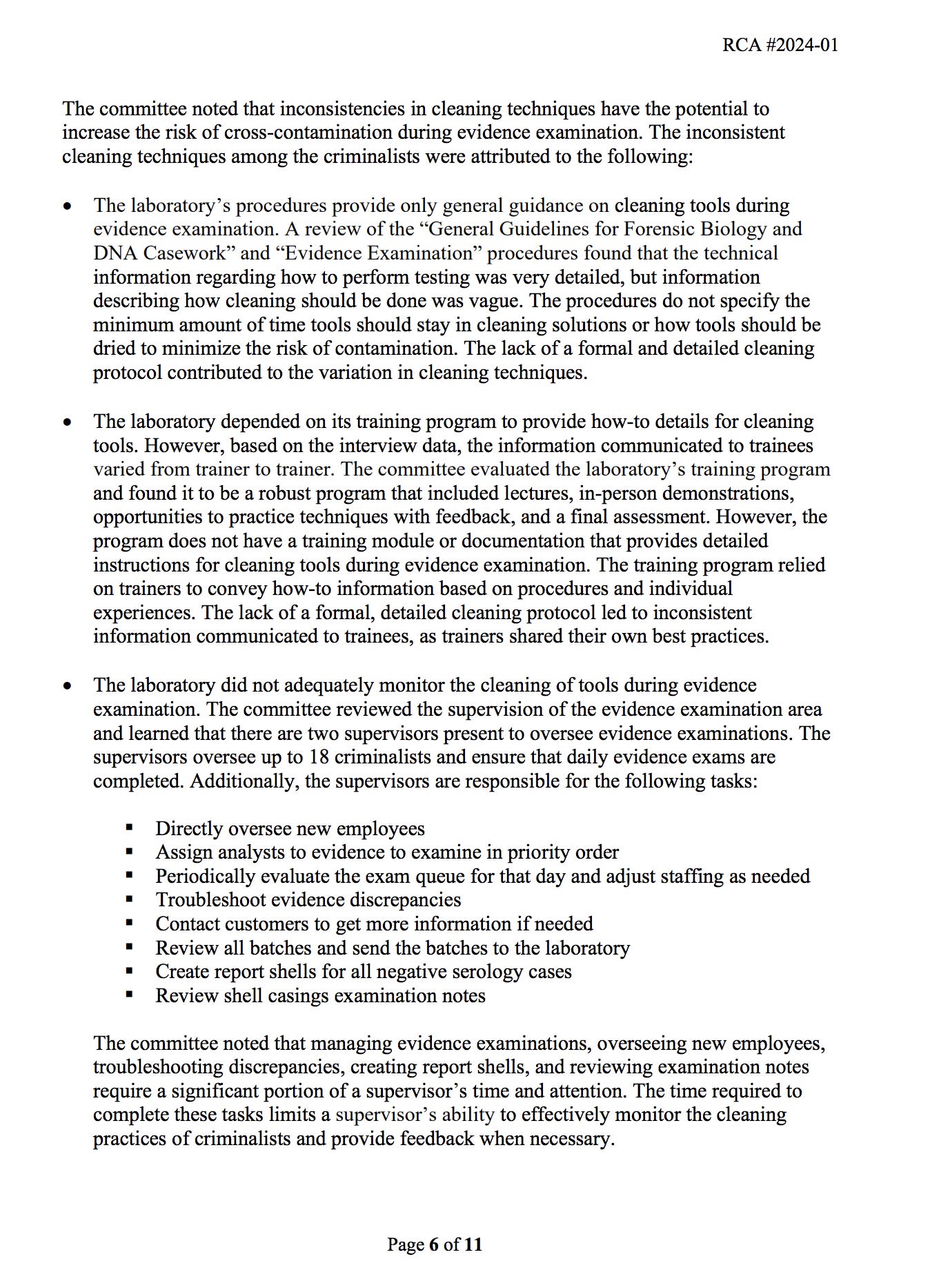EXCLUSIVE: NYC Medical Examiner's Office Contaminated 22 Sexual Assault, Robbery, Burglary and Other Cases
The New York City Medical Examiner’s Office contaminated 22 criminal cases, according to a new report I’ve exclusively obtained.
The 11-paged report analyzes the root cause of the cross-contamination that took place at the NYC Office of Medical Examiner. The report found that out of 12,873 samples, 26 samples (belonging to 22 cases) were found to be affected by 16 contamination events. The Root Cause Analysis (RCA) committee reviewed the 16 contamination events and found that 9 criminalists were involved in the events.
The investigation comes after the Quality Assurance Director determined that this was a “significant event” within the meaning of Title 17, Chapter 2, Section 17-207 of the Administrative Code of the City of New York.
I’ve reached out to Manhattan DA Alvin Bragg’s for comment. They did not provide comment.
The OCME spokesperson did respond to my request for comment by saying, “as previously disclosed to stakeholders and required by law, OCME conducted a thorough and independent review of cross-contamination incidents reported in the DNA laboratory. This final report marks the conclusion of that process and will allow the agency to move forward with the suggested improvements.” They declined to detail if any of these employees were terminated due to the cross-contamination.
Here’s a summary of the report. The FULL report can be read below:
On June 26, 2024, a reporting analyst was reviewing case information when they noticed that the DNA profile of the bloodstain in a property crime case they were reviewing matched the DNA profile for another case they had recently worked on (property burglary). Both cases were examined by Criminalist #1 on June 11, 2024.
The reporting analyst reviewed all the cases examined by Criminalist #1 on June 11, 2024, and found a total of four cases in which the DNA profile matched the DNA profile from the case they had recently worked on; (property burglary, firearm case, robbery, and “other” case types”. The reporting analyst notified the analysts of the involved cases and halted work on the reports until the contamination event was investigated.
On June 27, 2024, the reporting analyst informed the Forensic Biology Quality Assurance Manager of the issue.
On June 28, 2024, the Forensic Biology Quality Assurance Manager informed Criminalist #1 of the contaminations and reviewed Criminalist #1’s examination process. Having no reason to believe this was anything other than an isolated instance of individual cleaning practices, the Quality Assurance Manager recommended that Criminalist #1 change gloves between cases, keep the examination scissors in ethanol, and dry the scissors with a sterile wipe when they are removed from the ethanol. A review of Criminalist #1’s cases was also commenced.
On July 30, 2024, the Forensic Biology Quality Assurance Manager identified a second contamination event while reviewing Criminalist 1’s cases. The Quality Assurance Manager found that on June 13, 2024, Criminalist #1 examined a sexual assault case and later contaminated a property crime case with DNA from the sexual assault case.
Forensic Biology managers informed Criminalist #1 of the second contamination event. The Nuclear DNA Technical Leader suspended Criminalist #1 from examination duties and required Criminalist #1 to undergo retraining.
On August 5, 2024, the Forensic Biology Quality Assurance Manager was notified of a third contamination event involving a different criminalist. The Quality Assurance Manager found that on July 1, 2024, Criminalist #2 examined a sexual assault case and later contaminated a property crime case with DNA from the sexual assault case.
Forensic Biology managers interviewed Criminalist #2 about their techniques. The Nuclear DNA Technical Leader suspended Criminalist #2 from examination duties and required Criminalist #2 to undergo retraining. RCA #2024-01 Page 3 of 11 On August 8, 2024, the Forensic Biology Quality Assurance Manager was notified of a fourth contamination event involving another criminalist. The Quality Assurance Manager found that on June 17, 2024, Criminalist #3 examined a sexual assault case and later contaminated two property crime cases.
On August 9, 2024, out of an abundance of caution, the DNA Technical Leader temporarily paused operations for certain sections of the laboratory to further investigate the contamination events. The affected areas included evidence examination, uploading DNA profiles to CODIS, and report issuance.
The RCA committee reviewed the 16 contamination events and found that 9 criminalists were involved in the events. The laboratory has a total of 108 criminalists who perform evidence examinations. The 9 criminalists involved in the contamination events completed training between 2022-2024 and participated in laboratory proficiency tests with no issues. The committee did not find evidence suggesting staff were overworked or pressured to skip steps due to increased workload.
The committee did not find evidence suggesting staff were overworked or pressured to skip steps due to increased workload.
The RCA committee was unable to determine with certainty the root cause for the contaminations because the actual bleach that was used to clean tools could not be tested and the timeframe of the retrospective study was limited.














Was DEI also listed as a cause?
Thank you.